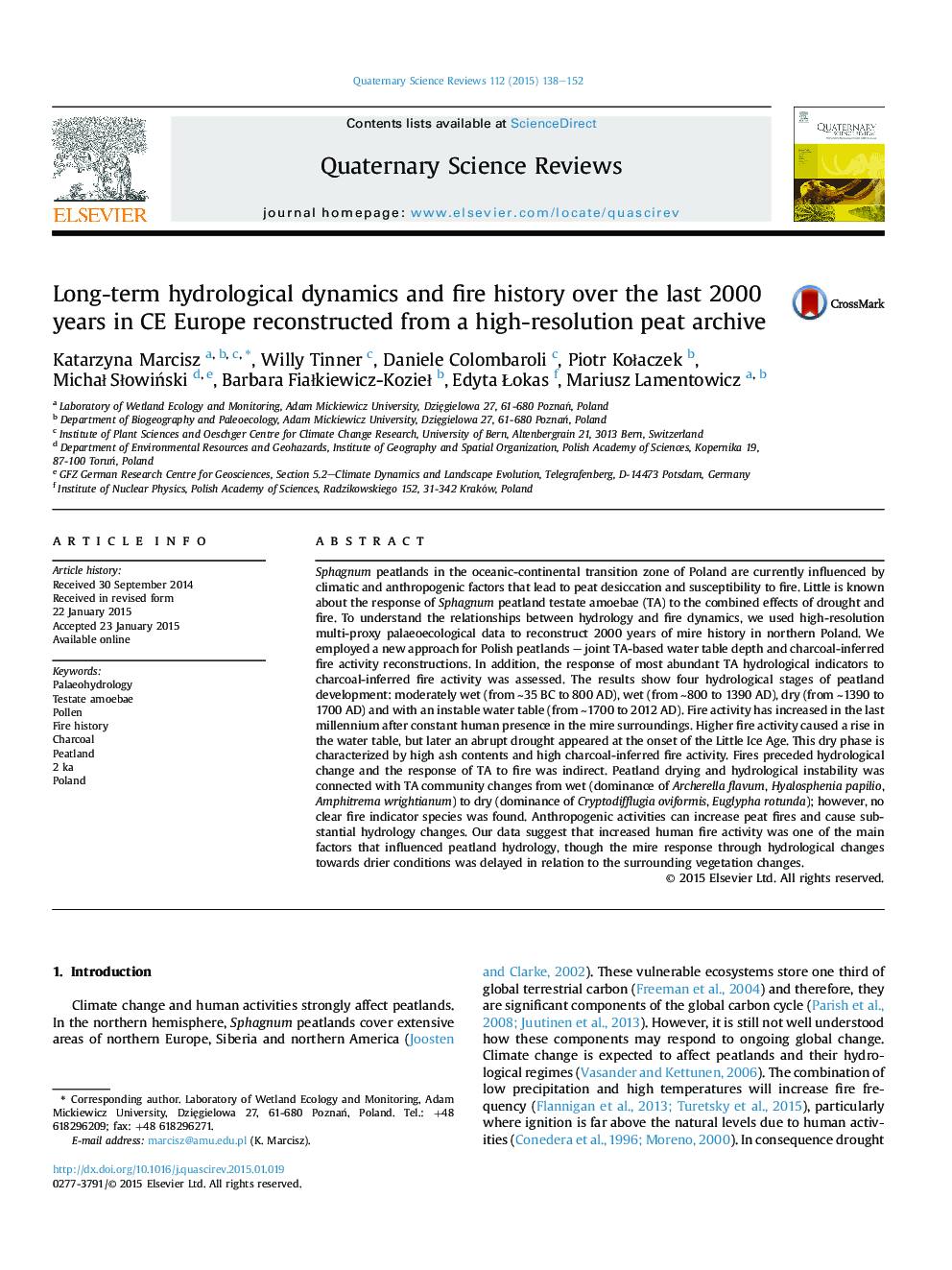| کد مقاله | کد نشریه | سال انتشار | مقاله انگلیسی | نسخه تمام متن |
|---|---|---|---|---|
| 6446400 | 1640822 | 2015 | 15 صفحه PDF | دانلود رایگان |
عنوان انگلیسی مقاله ISI
Long-term hydrological dynamics and fire history over the last 2000 years in CE Europe reconstructed from a high-resolution peat archive
دانلود مقاله + سفارش ترجمه
دانلود مقاله ISI انگلیسی
رایگان برای ایرانیان
کلمات کلیدی
موضوعات مرتبط
مهندسی و علوم پایه
علوم زمین و سیارات
زمین شناسی
پیش نمایش صفحه اول مقاله

چکیده انگلیسی
Sphagnum peatlands in the oceanic-continental transition zone of Poland are currently influenced by climatic and anthropogenic factors that lead to peat desiccation and susceptibility to fire. Little is known about the response of Sphagnum peatland testate amoebae (TA) to the combined effects of drought and fire. To understand the relationships between hydrology and fire dynamics, we used high-resolution multi-proxy palaeoecological data to reconstruct 2000 years of mire history in northern Poland. We employed a new approach for Polish peatlands - joint TA-based water table depth and charcoal-inferred fire activity reconstructions. In addition, the response of most abundant TA hydrological indicators to charcoal-inferred fire activity was assessed. The results show four hydrological stages of peatland development: moderately wet (from â¼35 BC to 800Â AD), wet (from â¼800 to 1390Â AD), dry (from â¼1390 to 1700Â AD) and with an instable water table (from â¼1700 to 2012Â AD). Fire activity has increased in the last millennium after constant human presence in the mire surroundings. Higher fire activity caused a rise in the water table, but later an abrupt drought appeared at the onset of the Little Ice Age. This dry phase is characterized by high ash contents and high charcoal-inferred fire activity. Fires preceded hydrological change and the response of TA to fire was indirect. Peatland drying and hydrological instability was connected with TA community changes from wet (dominance of Archerella flavum, Hyalosphenia papilio, Amphitrema wrightianum) to dry (dominance of Cryptodifflugia oviformis, Euglypha rotunda); however, no clear fire indicator species was found. Anthropogenic activities can increase peat fires and cause substantial hydrology changes. Our data suggest that increased human fire activity was one of the main factors that influenced peatland hydrology, though the mire response through hydrological changes towards drier conditions was delayed in relation to the surrounding vegetation changes.
ناشر
Database: Elsevier - ScienceDirect (ساینس دایرکت)
Journal: Quaternary Science Reviews - Volume 112, 15 March 2015, Pages 138-152
Journal: Quaternary Science Reviews - Volume 112, 15 March 2015, Pages 138-152
نویسندگان
Katarzyna Marcisz, Willy Tinner, Daniele Colombaroli, Piotr KoÅaczek, MichaÅ SÅowiÅski, Barbara FiaÅkiewicz-KozieÅ, Edyta Åokas, Mariusz Lamentowicz,